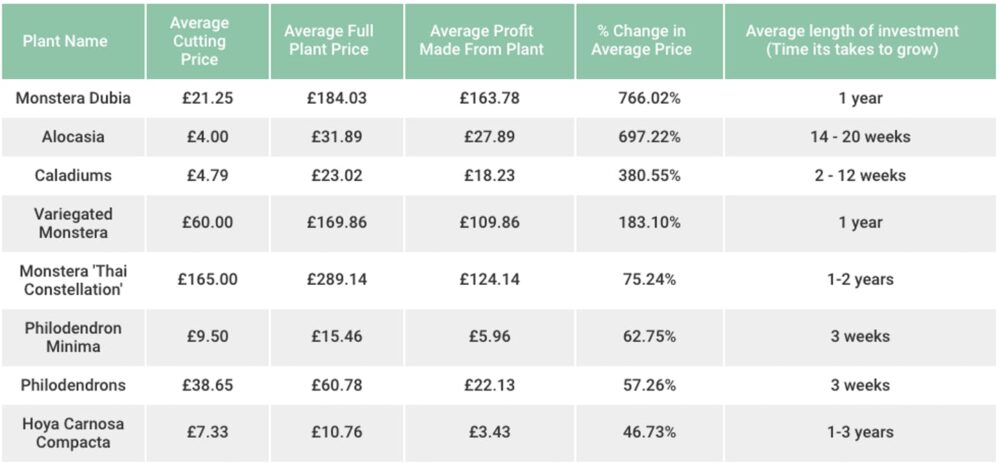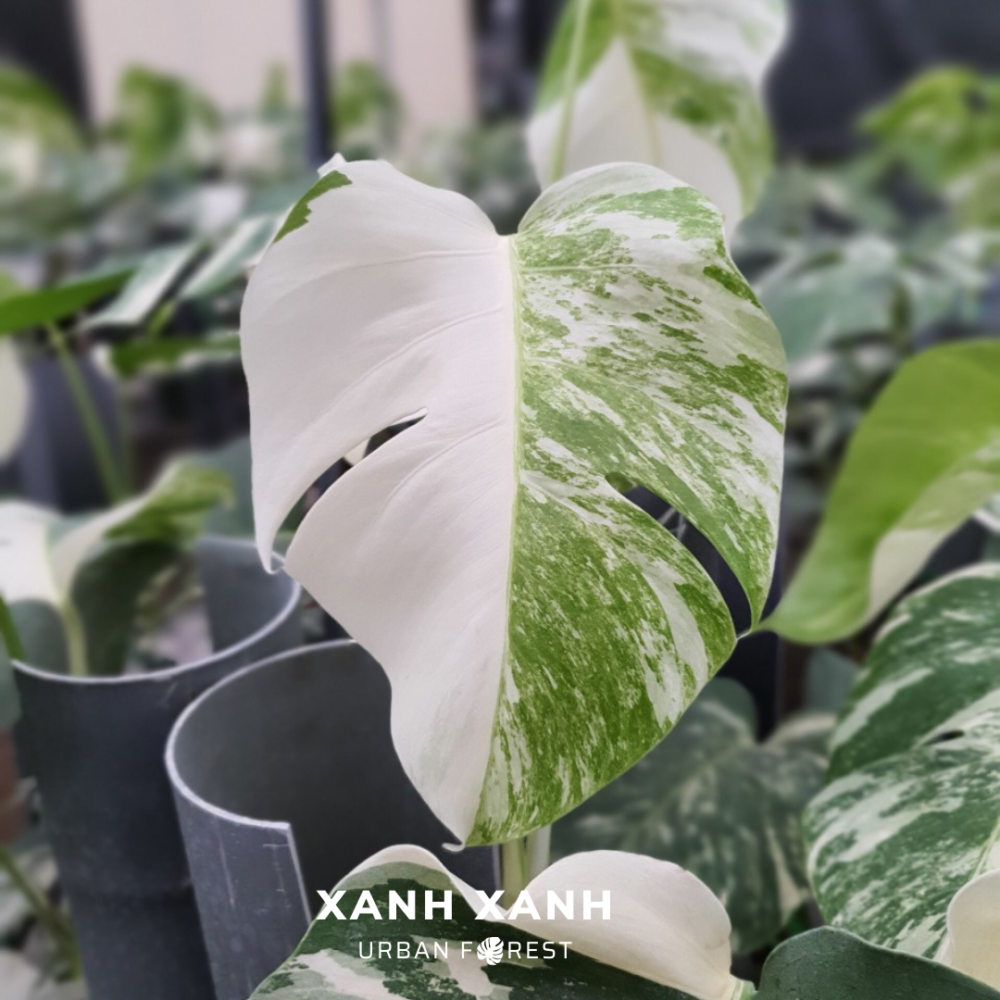Have a guess – what do you think are profitable investments now?
In recent years, plant parents have rare plants in their home simply to enjoy them. We love, we care, we enjoy the moment we make our living room into a little jungle. Watch them grow day by day and feel fulfilled by love.
Meanwhile, it is also equally fine to buy a houseplant as an investment in order to take cuttings and sell them. Or investing in tissue culture plant as a baby, growing it from a tiny cutie plant. Gardening with houseplants could be very profitable.
There are 05 factors that may affect your investment:
- The price (you pay for it – the buying price)
- Ease of propagation
- Time between propagations (how quickly you can propagate again)
- Ease of care
- Current market trend
Comparing the price of the cutting to the price of the fully grown plant allows you to determine which houseplant has the most return on investment and, therefore, has the potential to generate a sizable profit.

Take a quick look at above table, we saw several familiar names here such as: Philodendron, Alocasia and especialy Monstera Thai Constellation, which is one of the most expensive and in-demand house plants on the market! This plant grows and proliferates, making it a long-term investment with an excellent return. Recently, people love growing it from baby plant instead of cuttings due to it’s cheaper & easy to care.

1. The price of the rare plant
There are many options available on the market that may satisfy your criteria, depending on your budget, which may range from less than 50USD to more than 1000USD. It is possible to buy a cutting of the Philodendron Billietiae Variegated for just US $2500 and have it sent to you. More risk, more return.
2. Ease of propagation
How easy they are to propagate generally, or perhaps the failure rate of propagation.
For example, if you take 04 cuttings of Monstera Albo, how likely are they all to succeed? Two of them will fail or three of them will succeed. We should do a risk measurement by asking an expert who may provide you with more real experience that you don’t know.
3. Time between propagations (how quickly you can propagate again)
We have to consider when we cut our one mother plant. The question is how long it will probably be before you can then cut it again and sell another cutting.
This could be a math about opportunity cost when its growth rate is closely related to the value of the rare plant. As you can see in the above table, several plants take weeks or months to grow as new plants, but some take a year. This also tests your patient.
4. Ease of care
Some people might think growing a plant is easy, just placing it under indirect sunlight and watering it as scheduled.
No, it’s really not. This is an area the same as science. We have to learn and notice the plants. If a plant is super hard to care for, that’s going to be a factor in propagating and potentially selling the propagation.

5. Current market trend
Compared joyfully to traders who always put all their attention on the stock board, it’s quite the same with plant nerds these days looking at the rare plant market.
Investors buy rare plants when they’re going out of fashion. It’s probably not a good idea to spend money on them. Unless, you don’t want to propagate it and you want to keep it for yourself, then it’s a great time to buy it.
This is simply an open discussion about what I believe is a reasonable way to invest in house plants. If you’re just starting your investment journey, be sure to review our product list to compare the best deals for your circumstances.
- Monstera7 products
- Philodendron19 products
- Alocasia13 products
Ref: (Haqqi From plants to profits: How to turn your houseplant obsession into a lucrative investment)

